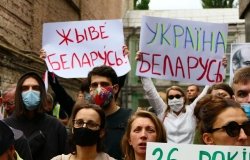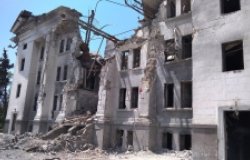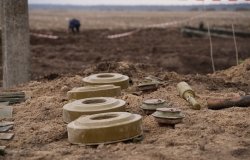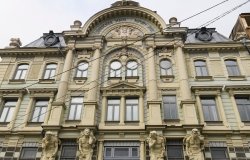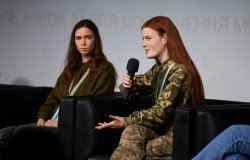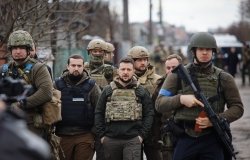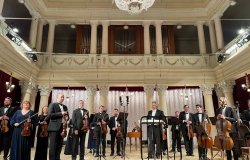
A blog of the Kennan Institute
Stolen Spring but Not Stolen Humanity
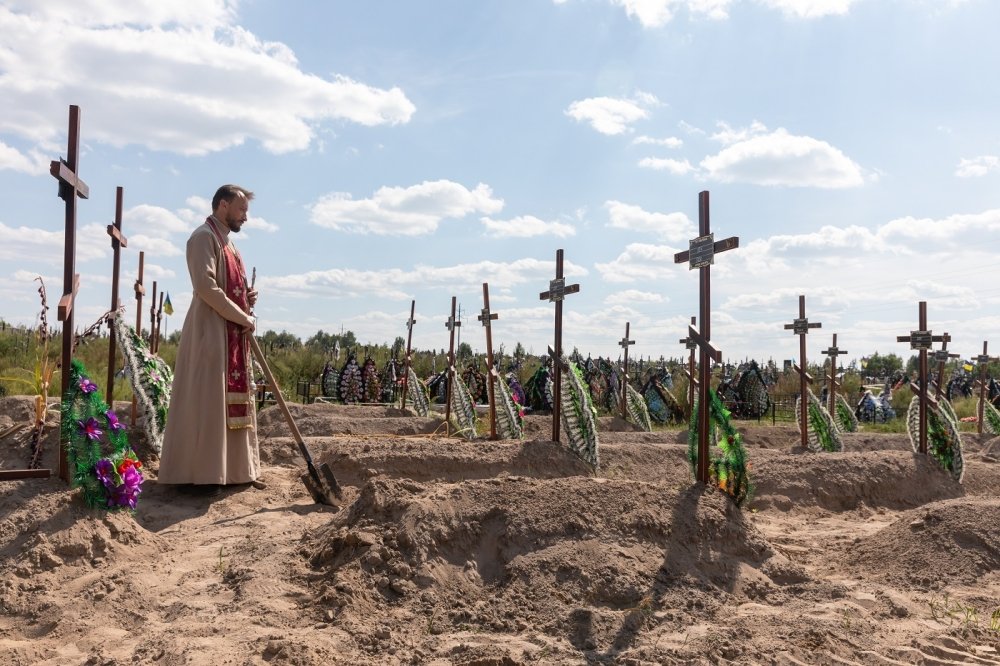
Photographer Olena Grom has been fleeing Russian invaders for nearly a decade. Born in Donetsk, she trained and developed her technique in and around her native city. Hoping to have a career as a conceptual artist, she discovered that photography empowered her creative instincts. She quickly gained a national and international reputation, earning exhibitions and recognition as far away as Singapore, Colombia, and Canada. Then Putin’s “little green men” entered her hometown and, with local collaborators, proclaimed it to be part of Russia.
Grom and her family made their way west, eventually settling in the Kyiv suburb Bucha, and she set up a studio in neighboring Irpin. Her professional achievements continued, with opportunities to show her work in Kyiv as well as in galleries across Europe. Her career flourished. International photography juries began recognizing her work. Bucha and Irpin seemed a safe haven for Grom to pursue her creative life.
But Bucha, it turned out, was on the Russian invasion route to Kyiv. In February 2022, she and her neighbors stood in the way of a full-scale invasion. They would soon suffer almost total destruction, victims of massacres and other unspeakable war crimes.
Grom managed to leave Bucha briefly, only to return after the Russians pulled out weeks later. Complete devastation and profound trauma became her reality as she and her neighbors began rebuilding their communities and personal lives as best they could. As she surveyed her town, she began to think about Michael Nash’s photographs of the complete destruction of Warsaw at the end of World War II. Nash’s work inspired Grom to turn her camera on the devastation surrounding her.
As she began taking her photos, Grom noted that those who had survived were too preoccupied with reconstructing their lives to notice that spring had arrived. Flowers blossomed amidst the rubble; birds flew in from their winter travels. Nature reaffirmed life in ways beyond human capacity. She hit upon the idea of contrasting the Russian destruction with nature’s rebirth.
Grom created studio-sized photographic backdrops showing spring scenes—bright flowers, babbling brooks, open fields—and set them up outside in front of the blackened, war-ruined urban landscape that had become Bucha’s reality. She invited neighbors to don their best remaining clothing and pose in front of her camera. The result is “Stolen Spring,” a series of portraits revealing both the horror of physical ruin and the hopes of spring and of her resilient neighbors who were setting out to rebuild their town. This project became her psychological salvation even as she, her family, friends, and neighbors confronted some of the worst horrors of 21st century war.
Two years on, her powerful photographs have made their way out of Bucha via the internet and exhibitions around the world. The 15 international jurors of the annual Fine Art Photography Awards (FAPA) were among those admiring Grom’s work. They awarded her twice during this year’s competition, once as Professional Photographer of the Year, and also with first place in the Professional Portrait category.
For the past decade, FAPA has become one of the world’s leading awards programs. FAPA asks its jury to honor “artists and unique souls who breathe and live for creativity.” The awards have encouraged photographers to define their own personal vision for their work, eschewing technique and strictures of form. Grom’s gripping images combining human dignity, the hope of spring, and the terror of war represented FAPA’s goals.
Humanity often is lost as war grinds on. Grom’s photography from Bucha and Irpin reveals that neither humankind nor nature disappear. A future with hope may be found in the sanctuaries of peace and springtime.
The opinions expressed in this article are those solely of the author and do not reflect the views of the Kennan Institute
See our newest content first.
Subscribe to receive the latest analysis from Focus Ukraine
About the Author

Blair A. Ruble
Former Wilson Center Vice President for Programs (2014-2017); Director of the Comparative Urban Studies Program/Urban Sustainability Laboratory (1992-2017); Director of the Kennan Institute for Advanced Russian Studies (1989-2012) and Director of the Program on Global Sustainability and Resilience (2012-2014)

Kennan Institute
The Kennan Institute is the premier US center for advanced research on Eurasia and the oldest and largest regional program at the Woodrow Wilson International Center for Scholars. The Kennan Institute is committed to improving American understanding of Russia, Ukraine, Central Asia, the South Caucasus, and the surrounding region though research and exchange. Read more
